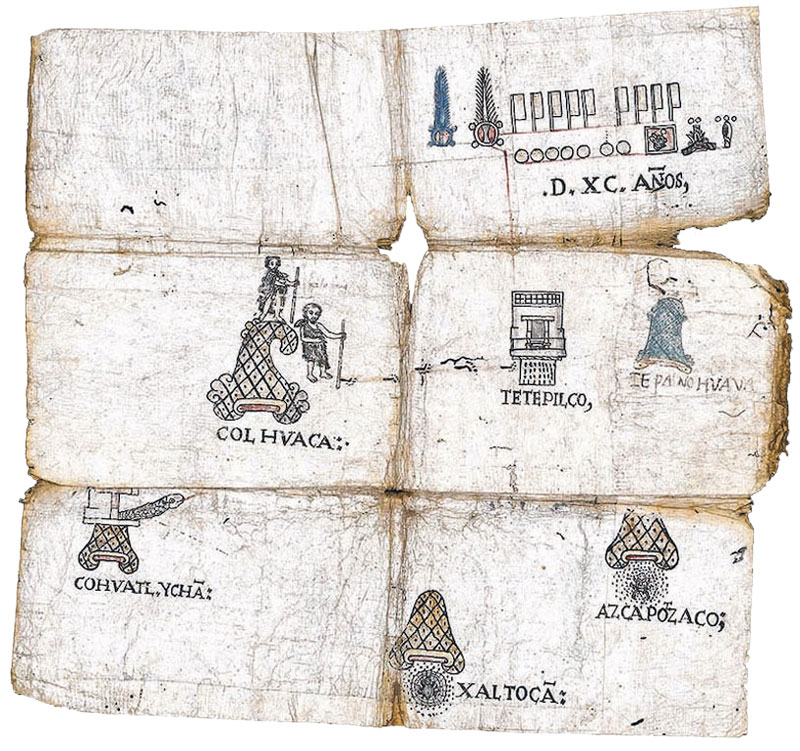
InahCodices of San Andrés Tetepilco, with illustrations and texts in the native language and in SpanishInah
The Mexican National Institute of Anthropology and History (INAH) purchased three pictographic documents known as the Codices of San Andrés Tetepilco from a Mexican family for the equivalent of almost R$3 million. Created in the sixteenth and seventeenth centuries, the codices will be stored in the Mexican Codex Collection at the National Library of Anthropology and History (BNAH). The three manuscripts contain Indigenous paintings and texts in Nahuatl, a language spoken since the seventh century in what is now central Mexico, as well as in Spanish, written with the European alphabet. They also include a map of San Andrés Tetepilco from around the year 1300, in what is now southeast of Mexico City, with landmarks that coincide with real locations; a two-page inventory of the San Andrés Tetepilco church, with descriptions of religious vestments and musical instruments; and the “Tira de Tetepilco,” which consists of 20 folded pages and describes the rulers of pre-Hispanic times, the arrival of the Spanish in 1519, and their rule until 1611 (the Spanish ruled Mexico until 1821). Preliminary examinations indicated that the codices were made on amate paper (made from the cooked inner bark of trees) with a layer of plaster and cochineal extract. Inks made from plants, coal, indigo, and ochre were applied for the colors red, yellow, black, and blue (INAH Newsletter, March 21; LiveScience, March 25).
Republish